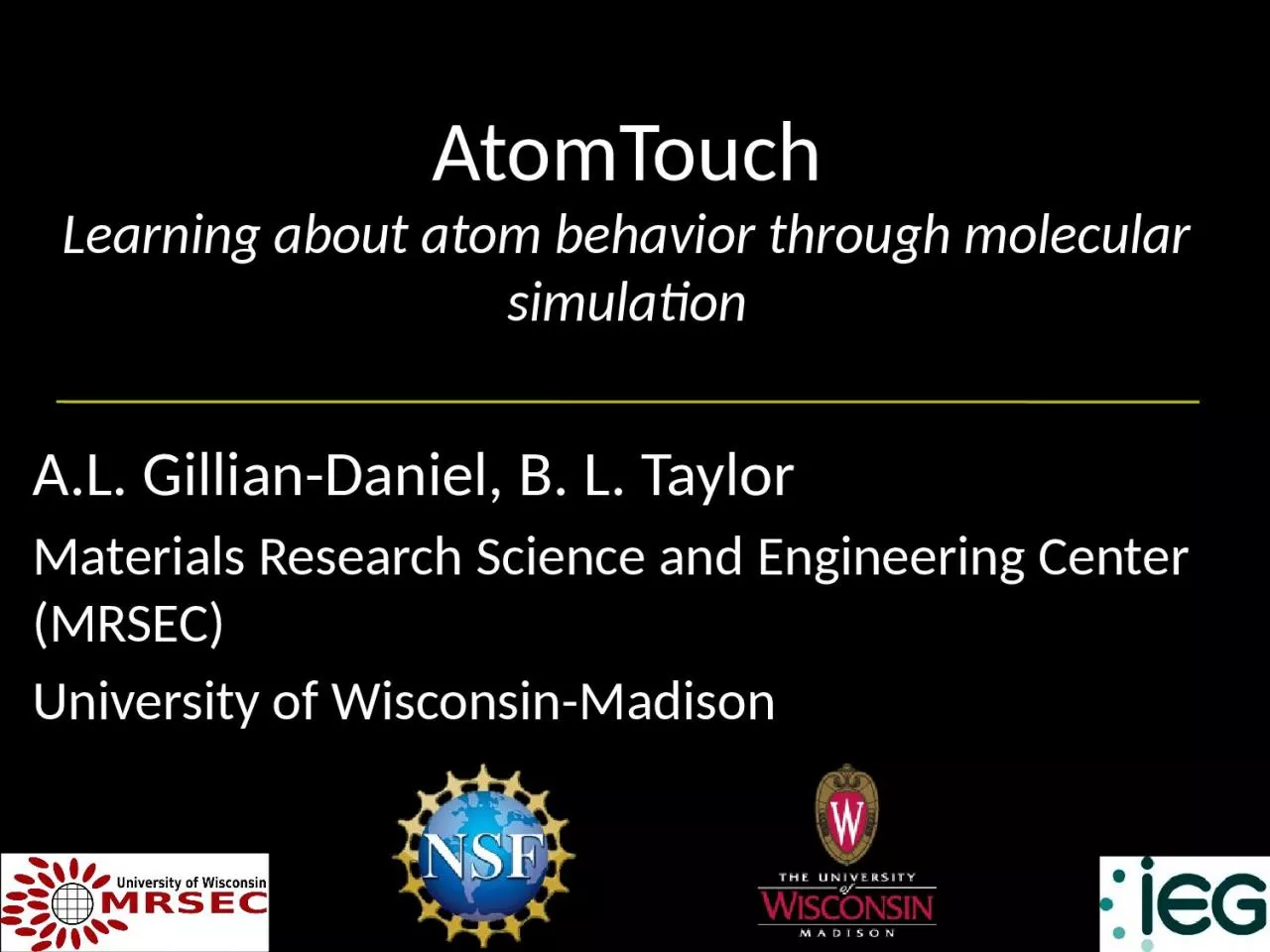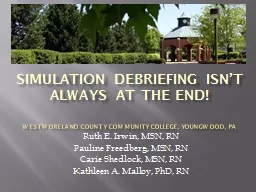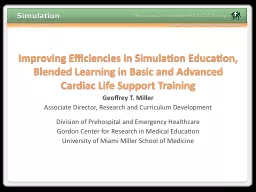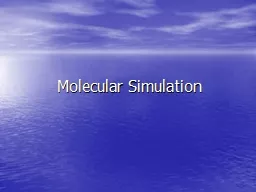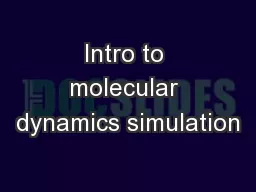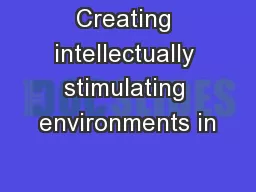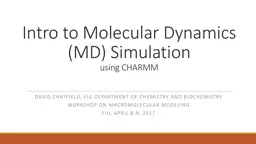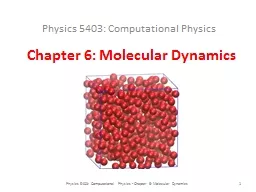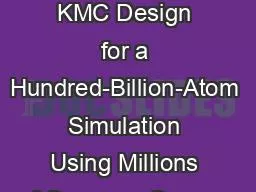PPT-AtomTouch Learning about atom behavior through molecular simulation
Author : jainy | Published Date : 2024-02-09
AL GillianDaniel B L Taylor Materials Research Science and Engineering Center MRSEC University of WisconsinMadison Nanotechnology is the understanding and control
Presentation Embed Code
Download Presentation
Download Presentation The PPT/PDF document "AtomTouch Learning about atom behavior t..." is the property of its rightful owner. Permission is granted to download and print the materials on this website for personal, non-commercial use only, and to display it on your personal computer provided you do not modify the materials and that you retain all copyright notices contained in the materials. By downloading content from our website, you accept the terms of this agreement.
AtomTouch Learning about atom behavior through molecular simulation: Transcript
AL GillianDaniel B L Taylor Materials Research Science and Engineering Center MRSEC University of WisconsinMadison Nanotechnology is the understanding and control of matter 1 to 100 nanometers in size. 1. Li-C. Wang. , . Malgorzata. . Marek-. Sadowska. University . of California, Santa Barbara. Synopsis. Simulation is a popular approach employed in many EDA applications. In this work, we explore the potential of using machine learning to improve simulation efficiency. Manu Madhok, MD, MPH. Emergency Department. Children’s Hospital and Clinics of Minnesota. Disclosures. I have no financial disclosures or conflict of interest. Objectives. Review Simulation and Debriefing background . Westmoreland County Community College, Youngwood, Pa. Ruth E. Irwin, MSN, RN. Pauline . Freedberg. , MSN, RN. Carie. . Shedlock. , MSN, RN. Kathleen A. Malloy, PhD, RN. Disclosure. The presenters have no affiliation or financial interest in any of the content or equipment referred to in this presentation.. Blended Learning in Basic and Advanced Cardiac Life Support Training. Geoffrey T. Miller. Associate Director, Research and Curriculum Development. Division of . Prehospital. and Emergency Healthcare. Molecular Simluation. Introduction:. Prerequisition: . A powerful computer, fast graphics card,. An efficient way to solve Schroedingers wave equation for many atoms,. A reliable structure or structural model. Yu-Shan . Lin (YSL). Department of . Chemistry. Tufts . University. Simulate how molecules move. Molecular dynamics simulations. km. hr. v. . (0). = . =. . 100. = 1000 kg. = . −. 7000 N. m. s. 2. large classes. 1/21/12. Diane O’Dowd. UCI, . dkodowd@uci.edu. http://. www.researchandteaching.bio.uci.edu. How would you define a classroom that is. “intellectually stimulating”. A place where . Blended Learning in Basic and Advanced Cardiac Life Support Training. Geoffrey T. Miller. Associate Director, Research and Curriculum Development. Division of . Prehospital. and Emergency Healthcare. 3. . Empirical classical PES and typical procedures of optimization. 3.01. Classical potentials. Molecular mechanics. Molecular mechanics. The energy of the . hypersurface. . or potential energy surface (PES) corresponding . Salehi. Marc D. Riedel. Keshab. K. Parhi. University of Minnesota, USA. . Markov Chain Computations. using . Molecular Reactions. 1. Introduction. Modeling of Molecular Systems. Mass-action Law. Stochastic . using CHARMM. . DaVID. CHATFIELD, FIU DEPARTMENT OF CHEMISTRY AND BIOCHEMISTRY. Workshop . on Macromolecular Modeling. FIU, April 8-9, 2017. Overview. Principles of MD. MD Program Structure. System Preparation. Physics 5403: Computational Physics. Physics. 5403: . Computational. . Physics. - . Chapter. 6: . Molecular. Dynamics. 1. 6.0 Overview. What is molecular dynamics (MD)?. Numerical method for studying many-particle systems such as molecules, clusters, and even macroscopic systems such as gases, liquids and solids . Taihulight. SC 19. Kun Li. *. , . Honghui. Shang. *. , . Yunquan. Zhang, . Shigang. Li, . Baodong. Wu, Dong Wang, . Libo. Zhang, Fang Li, . Dexun. Chen, . Zhiqiang. Wei. Institute of Computing Technology, CAS. Genetic Counseling Training. Kathleen B. Swenson, MS, MPH, CGC. Program Director, Boston University. Assistant Professor, Medical . Sciences . and . Education. 5. th. Annual . As. sessment Symposium.
Download Document
Here is the link to download the presentation.
"AtomTouch Learning about atom behavior through molecular simulation"The content belongs to its owner. You may download and print it for personal use, without modification, and keep all copyright notices. By downloading, you agree to these terms.
Related Documents

